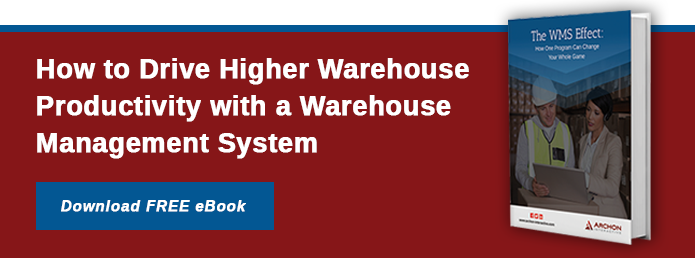 Your warehouse efficiency is a product of all the things that make up your warehouse workflow. Each element of your workflow represents an area ripe for improvement. In order to evaluate workflow, you should think in terms of contacts, steps, travel distance, and timeliness. These four factors interact with each other in your warehouse in ways that add to or detract from your overall warehouse efficiency.
Your warehouse efficiency is a product of all the things that make up your warehouse workflow. Each element of your workflow represents an area ripe for improvement. In order to evaluate workflow, you should think in terms of contacts, steps, travel distance, and timeliness. These four factors interact with each other in your warehouse in ways that add to or detract from your overall warehouse efficiency.
Contacts
A contact is any time a human being has to physically touch a product. Each contact means that the item has to be moved or handled in some way and is likely waiting for an employee to come along before it can go to the next step of your process. Contacts also represent an opportunity for damage to occur since products that are being handled are more likely to be dropped. How many contacts do your products have on their way through your warehouse? Are all of those contacts strictly necessary?
Steps
Once you've evaluated the number of contacts endured by each product, you may have realized that there are too many steps in your total workflow. Is it possible to consolidate things like picking and packing into one movement? This would eliminate a point of contact altogether and reduce the number of steps it takes to get the product out the door. Thinking outside the box, there may be ways for you to work with your suppliers to reduce the number of steps it takes to receive items as well. Anywhere that you can cut out wasteful extra steps leaves you room for improved warehouse efficiency.
Travel
The amount of travel your products see is another important element of your workflow. If products are randomly received at whatever dock is open first, it is possible that the products themselves are traveling a long ways to their stock locations. Try routing shipments to the dock closest to where the products will end up. How does your warehouse efficiency improve if your put away team takes 1/3 fewer steps on the way to the product locations? This is especially important for high-demand items that pickers may already be waiting on. Creating a hot spot near the dock makes it possible to immediately put high-demand products right into waiting pickers' hands with almost no travel. Again, any product traveling across your floor is more likely to be damaged along the way, resulting in returns and replacements that hurt warehouse efficiency.
Trust the Computer
Any well-programmed Warehouse Management System is capable of running calculations that affect dispatching, routing and other major functions in much less time than a human being. Barcode scanners are able to pick up stock locations and product codes in seconds with a much higher degree of accuracy than a human manually entering numbers. Putting your trust in your computer systems and eliminating as many manual operations as possible will earn you the greatest gains in warehouse productivity.
These are just four of the elements that make up warehouse efficiency. Looking at your workflow through each of these four lenses gives you the ability to identify weaknesses in your operation. Take each one in turn and look for signs that your current process is too cumbersome, write them down and think of creative ways to consolidate what you do into a more streamlined process.




